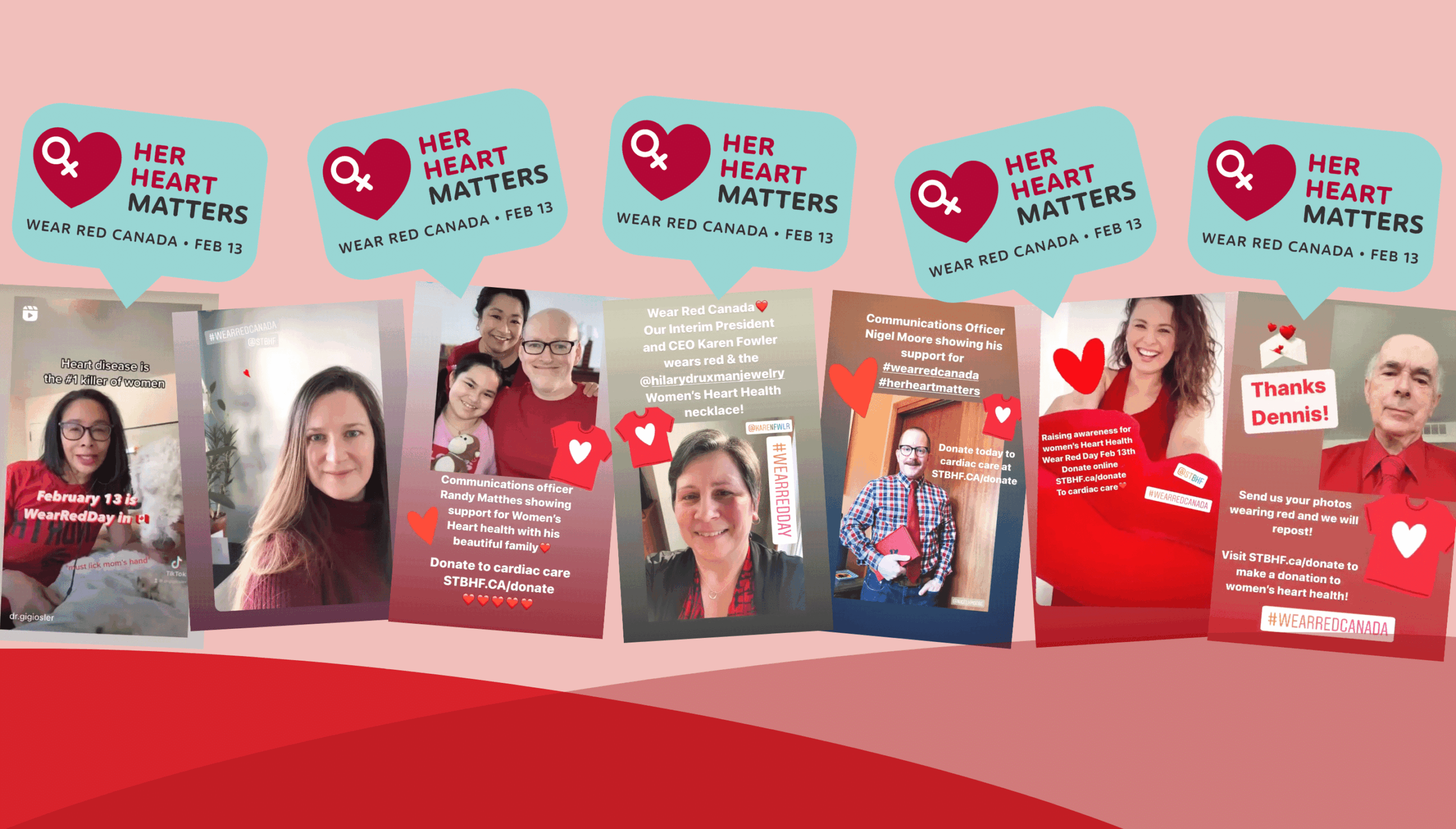February 16, 2021
On a day when many Canadians donned red in support of women’s heart health, Kendra Rempel and Patti LeBlanc, former St. Boniface Hospital cardiac patients, reflected on how their spontaneous coronary artery dissection (SCAD) heart attacks have changed their lives.
The women participated in Living With SCAD, a virtual presentation and panel hosted by the Canadian Women’s Heart Health Alliance (CWHHA) Manitoba and Saskatchewan chapters, together with St. Boniface Hospital and the Heart and Stroke Foundation of Manitoba.
The presentation was part of a full day of free virtual programming on Saturday, Feb. 13 to promote the latest in women’s heart health science, research, and prevention and wellness strategies. The Manitoba government officially proclaimed the date as Wear Red Canada Day.
The CWHHA organized Wear Red Canada, now in its third year, to bring awareness to women’s heart health and heart disease across all regions of the country. Heart disease is the number one killer of women worldwide and it affects women of all ages.
SCAD is a condition in which a small tear forms within one of the blood vessels in the heart. It can lead to blood flow problems, heart attack, abnormalities in heart rhythm, and even death.
Rempel, who lives just outside of Portage la Prairie, learned about SCAD the hard way – by having a heart attack at only 28 years old in October 2020.
“I didn’t know about the signs of having a heart attack. At my age, nothing, really,” she said.
“What really hit me was, I am 28 years old, I was active and healthy, and I just had no idea of the risks or what could happen to me. When I was first told I was having a heart attack at Portage District General Hospital (before going to St. Boniface Hospital), I did not really believe them at first. It took me a while to understand what was happening,” said Rempel. “My first thought was, ‘How am I going to tell my mom?’”
“At only 28, a heart attack didn’t seem like a possibility for me.”
Rempel recognized the warning signs only in hindsight. “Prior to my heart attack, I was nauseated for an entire week. I was taking multiple Gravols a day, and I had pain in my back between my shoulder blades. And then the chest pain.”
SCAD impacts younger women
Women having heart attacks often present differently than men. In fact, studies have shown that up to 53 per cent of women who experience heart attack symptoms have them go unrecognized.
“Signs of heart attack are usually related to uncomfortable pressure and squeezing in the chest,” said Dr. Olga Toleva, an interventional cardiologist at St. Boniface Hospital who spoke in the presentation. Common symptoms of a heart attack for women include shortness of breath, pressure or pain the lower chest or upper abdomen, dizziness, light-headedness or fainting, upper back pressure, or extreme fatigue.
Up to 90 per cent of cases of SCAD are in female patients, it’s common in otherwise healthy young women under 50 years of age, like Rempel, and can also occur during pregnancy.
SCAD can be caused by emotional and stressful situations, physical triggers like resistance and high-intensity training and long-distance running, as a pregnancy complication, hormonal triggers, genetic predispositions, and a condition called fibro muscular dysplasia, Toleva explained to the Zoom audience.
Marathon runner caught by surprise
Former St. Boniface Hospital cardiac patient Patti LeBlanc, of Winnipeg, was also a guest panelist. Five years ago, at age 50, she had been doing everything right: training to run a 50 km ultra-marathon, eating right, and taking care of herself.
But on her way to a potluck meal at her church, LeBlanc picked up her Crock-Pot slow cooker and at that moment she “blew an artery”, as she put it. “I didn’t fit the normal heart attack mold; I was a long-distance runner,” she said. It felt like an elephant was sitting on her chest.
She left the church, went home, and dialed 911. Within an hour, she was wheeled into the Cardiac Catheterization Laboratory at St. Boniface Hospital and was diagnosed with a heart attack caused by SCAD.
“When we got to St. Boniface, it felt like I was in a movie. Everyone in the operating room was there waiting for me. They placed a three-centimeter stent in my heart. I remember afterward, being back in my hospital room. I was crying; I was sad. I didn’t know what I had done wrong!
I had been taking care of myself and doing everything right. After I went home, I was still afraid. But I made it.”
“It does get easier,” said LeBlanc. “I remember the first year was rough, doing something for the first time again was scary. But I did eventually get back to running. I was a slow runner to begin with, and I am even slower now. I listen to my heart rate religiously; I have a dedicated group of running partners, and when my heart rate gets above 130 beats per minute, we all stop and walk.”
“It got better. I got stronger and I’ve listened to my body,” she said.
Fight heart disease. Donate today.





